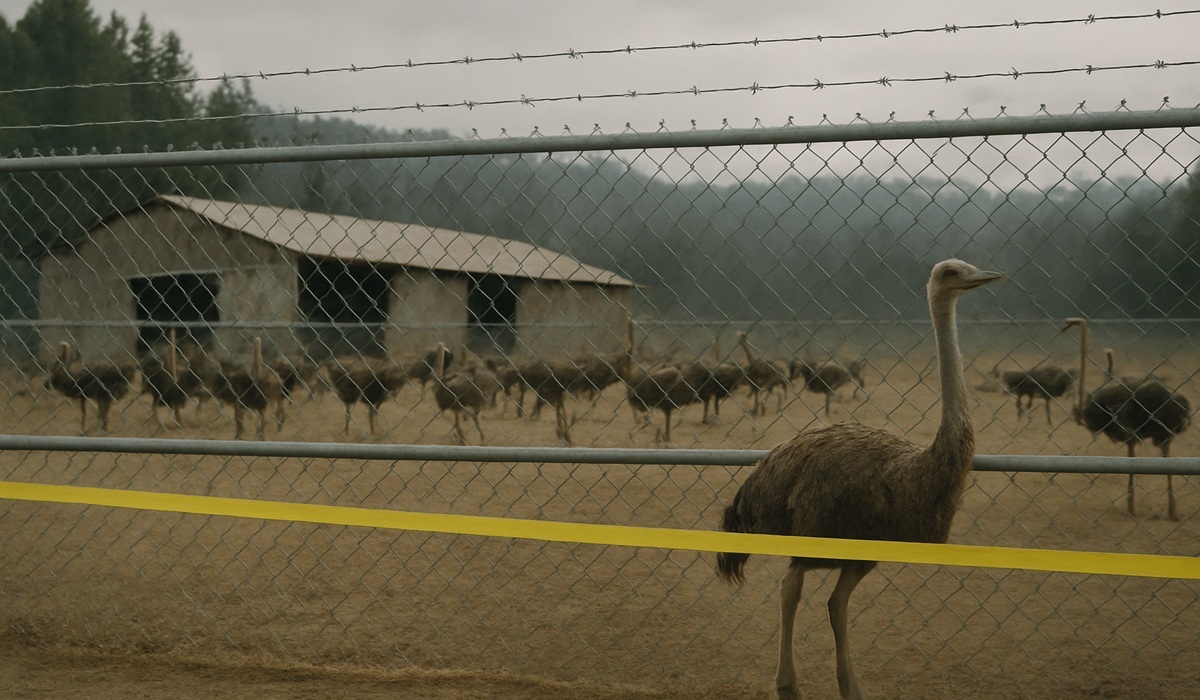The completion of federal operations at an ostrich farm in Edgewood, British Columbia has become the centre of an emotional, legal, and political debate—one that has raised questions not just about disease control, but about public trust, government authority, and whether long-standing laws still reflect modern expectations. What began as a strict response to a confirmed case of highly pathogenic avian influenza (HPAI) has grown into a national conversation about how Canada handles infected livestock and the consequences for everyone involved.
Under federal law, the Canadian Food Inspection Agency operates with sweeping authority when dealing with animal diseases capable of rapid and devastating spread. The Health of Animals Act gives inspectors the legal mandate to order quarantines, restrict movement, and, when required, destroy affected animals to prevent wider contagion. These powers were created with a simple goal: stop an outbreak before it spreads. In the case of the Edgewood ostrich farm, the CFIA followed the same framework applied to poultry farms across the country for decades. Once HPAI was confirmed, the law required decisive intervention.
Three hundred and fourteen ostriches were humanely culled, their eggs and related materials destroyed, and every trace of infection handled according to federal protocols. The remains were buried in an approved British Columbia landfill using deep-burial procedures that meet both provincial and federal containment standards. The farm remains under quarantine and will stay that way until cleaning, disinfection, and a federally supervised fallow period are completed.
But the legal process has not shielded the operation from backlash. The public reaction—particularly among animal advocates, neighbours, and some local officials—has been intense. Many questioned the necessity of such a large-scale cull. Others argued the CFIA should have adopted new or alternative strategies, especially given that ostriches are not traditional poultry and outbreaks of this nature are rare. Social media commentary amplified the anger, and rallies formed calling for reforms to the Health of Animals Act. Some advocacy groups insisted the government should revisit its approach to disease management, arguing that advancements in veterinary medicine and containment technology could make full depopulation unnecessary in certain cases.
Adding to the tension was the involvement of the RCMP, who assisted CFIA inspectors and contractors at the site. Their presence reinforced the seriousness of the quarantine order and, for critics, symbolized the heavy-handed nature of the response. Supporters of the operation countered that strict enforcement is essential when handling a rapidly spreading virus with real consequences for Canada’s multi-billion-dollar agricultural sector. For them, public safety and national food security outweigh other concerns.
The CFIA, for its part, has maintained that it simply followed the law as written. Every infected premises in Canada faces the same process: quarantine, depopulation when necessary, disposal, disinfection, oversight, and a controlled return to operation. These steps have been used for years, and they are designed to protect both the economy and the broader environment. The agency also emphasized that personal protective equipment was used consistently in designated “hot zones,” though it was not required elsewhere on the farm. Equipment, vehicles, and personnel followed strict disinfection procedures, all in line with national biocontainment standards.
Compensation remains another point of discussion. The farm is entitled to apply for financial reimbursement under the Compensation for Destroyed Animals and Things Regulations, a long-standing program designed to encourage early reporting and promote cooperation. Whether the compensation will cover the farm’s full losses, or whether the owner will challenge the decision, remains to be seen.
This brings the broader question into sharper focus: is the law the law, or is the law due for modernization? Canada’s animal health legislation has been updated over time, but current debates suggest growing public interest in more flexible, humane-forward frameworks. The CFIA’s defenders argue that swift depopulation remains the only reliable way to stop HPAI, a virus that has devastated wildlife, farms, and ecosystems worldwide. Critics counter that rigid protocols do not reflect advancements in treatment, containment, or farm-specific assessments.
In the end, the Edgewood case reveals the tension between established federal authority and evolving public expectations. The law remains clear: when a farm is infected, the CFIA has the power—and the obligation—to act decisively. Whether this approach will remain unchanged, or whether national pressure will prompt a re-examination of Canada’s animal-health laws, is a question that now sits firmly in the public arena.









